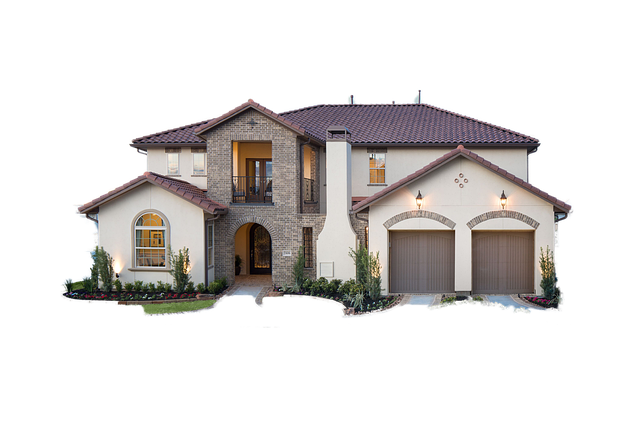Understanding the cost of home improvements is key to successful renovation projects. Research average costs, create a detailed budget including contingencies, and explore financing options like home equity or personal loans. Prioritize high-return upgrades like kitchens and bathrooms for maximum property value increase. Compare loan types from banks, credit unions, and online lenders based on rates, terms, and fees to choose the best fit within your financial goals and budget.
“Unsure where to begin with your home renovation dreams? Expert advice on financing these projects is crucial for turning your vision into reality. This comprehensive guide breaks down the complex world of home improvements, offering a detailed look at the cost of various renovations. We provide strategic budgeting and planning tips to ensure your project stays on track financially. Discover the home upgrades that offer the greatest return on investment, and learn how to navigate loan options like a pro.”
Understanding the Cost of Home Improvements: A Comprehensive Breakdown
Understanding the cost of home improvements is a crucial step in embarking on any renovation project. It’s easy to get caught up in the excitement of transforming your space, but without a clear budget, you may find yourself facing unexpected financial hurdles. The first step is to assess the scope of work involved. Major renovations like kitchen remodels or bathroom overhauls will naturally carry steeper prices compared to smaller projects such as painting or new flooring. Researching average costs for specific improvements in your area can provide a solid baseline for your budget planning.
Next, consider both fixed and variable costs. Fixed costs are one-time expenses like materials and labor, while variable costs are ongoing expenditures like permits and utility shifts. Additionally, factor in contingencies—unforeseen events or additional needs that may arise during the renovation process. Allocating a buffer in your budget can help prevent financial strain later on, ensuring your project stays on track without unexpected surprises.
Budgeting and Planning: Strategies for Financing Renovations
Renovating your home can be an exciting yet daunting endeavor, especially when considering the financial aspect. Budgeting and strategic planning are essential steps to ensure your renovation project stays on track and within your means. The first step is to accurately assess the cost of home improvements. Researching and understanding typical prices for your desired renovations will give you a baseline budget. Create a comprehensive list of tasks, from minor cosmetic changes to major structural alterations, and assign realistic costs to each.
Once you have a clear picture of your renovation’s scope and potential expenses, it’s time to start planning your financing. Consider your current financial situation, including savings, investments, and existing debts. Explore various options such as home equity loans, personal loans, or credit cards tailored for home improvements. Comparing interest rates, terms, and repayment methods will help you choose the most suitable funding option based on your budget. Additionally, be mindful of tax benefits related to home renovations; understanding these incentives can further optimize your financial strategy.
Maximizing Returns: Home Upgrades with the Greatest Impact
When planning home renovations, maximizing returns on your investment is a top priority for most homeowners. The key to achieving this lies in understanding which upgrades offer the greatest impact in terms of both aesthetics and resale value. High-return home improvements typically focus on key areas like kitchens and bathrooms, as these spaces are central to family life and can significantly enhance a property’s appeal. Upgrading kitchen fixtures, appliances, and countertops can increase the cost of home improvements, but it also offers a high return, making it a smart investment for any homeowner looking to boost their property’s value.
Beyond essential areas, strategic cosmetic changes can also make a substantial difference. For example, fresh paint, updated flooring, and modern lighting fixtures can transform a space, creating a more inviting and desirable atmosphere. These relatively low-cost fixes can make a home appear more spacious and up-to-date, attracting potential buyers if you decide to sell. By prioritizing these high-return upgrades, homeowners can ensure they’re getting the most bang for their buck when it comes to financing home renovations.
Expert Tips for Navigating Loan Options and Making Informed Decisions
When considering home renovations, navigating loan options can seem daunting but is a crucial step in bringing your vision to life. The first expert tip is to understand your financial situation and the cost of home improvements. Before applying for any loans, assess your budget, savings, and current income. This foundation will help you determine the type and amount of financing needed.
Additionally, compare different loan options available from banks, credit unions, or online lenders. Pay attention to interest rates, repayment terms, and any associated fees. Informed decisions are key; understanding these variables allows you to choose the most suitable loan that aligns with your financial goals and fits within your budget for the cost of home improvements.
Renovating your home can be a significant investment, but with the right planning and financial strategies, it doesn’t have to be an overwhelming process. By understanding the cost of home improvements through a comprehensive breakdown, budgeting effectively, and maximizing return on investment, you’re well-equipped to make informed decisions. When navigating loan options, consider expert advice to choose the best financing route for your project. Remember, thoughtful planning is key to successfully managing the financial aspects of your home renovation journey.
